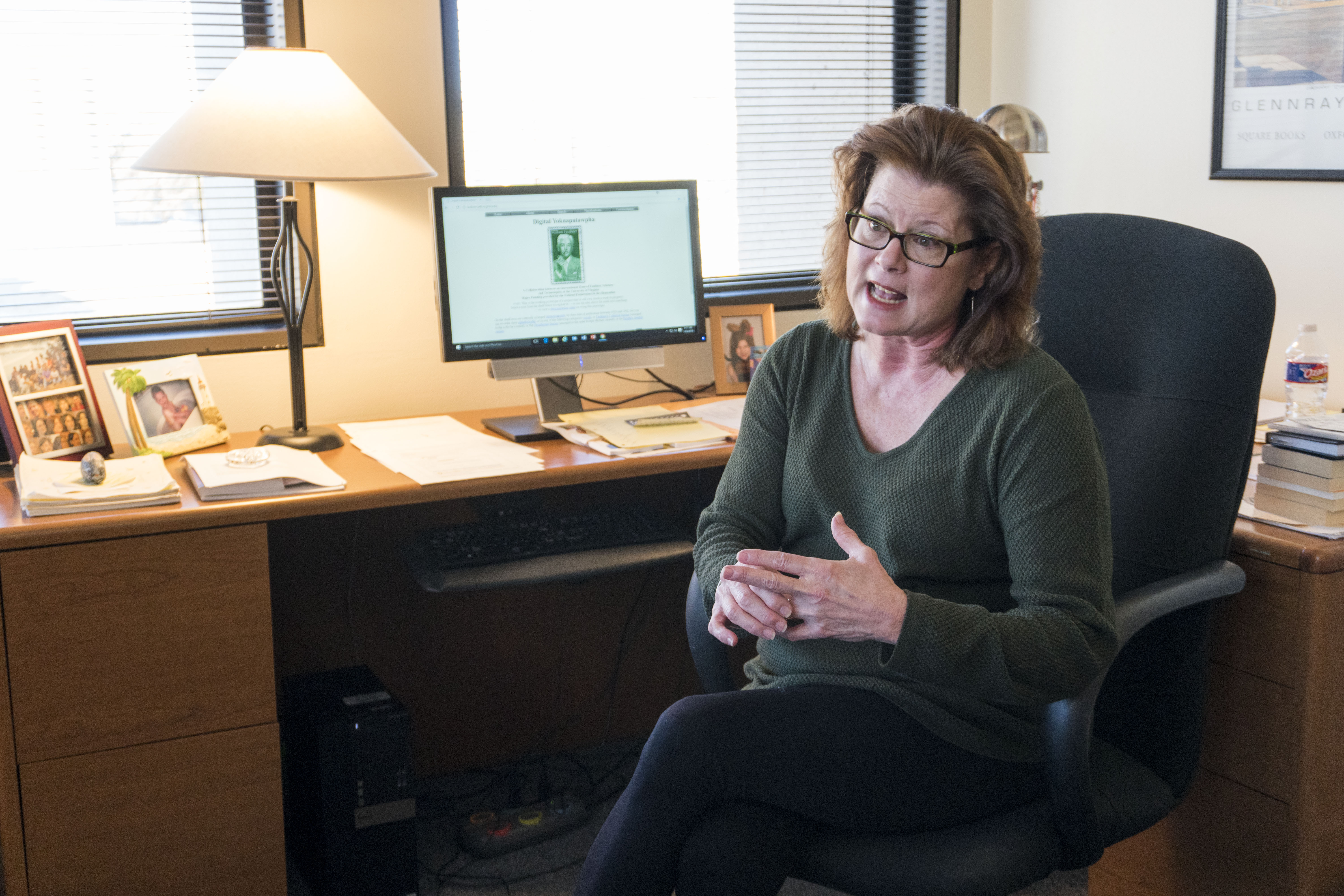A UTD professor helped lead a team of 24 professors from across the globe to digitize the fictional county author William Faulkner created.
Literary studies professor Theresa Towner serves as an associate director on the project to develop a website for “Digital Yoknapatawpha.” The team of scholars, who teach everywhere from Glasgow to Taipei to Berlin and beyond, collaborate to build the interactive map piece by piece.
The site, available for public use, features data from nearly 44 short stories and 10 novels. Hundreds of characters populate the virtual landscape, where users can experience a Faulkner work along with its unique visual component.
“Faulkner said he once had a moment envisioning the whole town of Yoknapatawpha with its various buildings and streets, a geographic model,” Towner said. “He saw his country whole. That’s the incredible thing we’re recreating, along with the additional layers of characters and human emotion and plot.”
During his lifetime, Faulkner produced more than 50 works, over half of which take place in the fictitious town of Yoknapatawpha. Classics such as “As I Lay Dying” and “The Sound and the Fury” take place in the imaginary county he based on Lafayette County, Mississippi, where he lived most of his life.
Website visitors, after choosing one of the Faulkner novels or short stories, are presented with a virtual map of the story’s physical geography. A heat map indicates the paths of both major and secondary characters between natural, man-made, and especially relevant locations.
“Rendering Yoknapatawpha to a digital map requires more than simple data entry,” Towner said. “It’s necessary for these scholars to have a background in Faulkner’s works because we are not just graphing numbers, but instead the dimensions of places and people and events.”
A filtering mechanism allows website guests to screen for certain characters or plot points, and a timeline below the map offers the options of either viewing the story chronologically or in the order Faulkner wrote the book. The Commentaries tab features a selection of maps drawn by Faulkner himself, from which Towner’s team assembled portions of their digitized Yoknapatawpha. Audio files from the author, rescued from crumbling tapes, provide background information on the novels and short stories.
During most semesters, Towner teaches a course on Faulkner’s works, and one class, she demonstrated the author’s fictional landscape for her students. Sophomore mechanical engineering student Natalie Heath said the best part of “Digital Yoknapatawpha” is the way it puts the stories’ settings in context.
“(Faulkner) writes over a dozen characters in just 12 pages of short fiction, and it can be a lot to keep up with,” Heath said. “Seeing a visual representation allowed me to visualize in my mind who is present in the story and where they are. I’m definitely going to click through his stories when I read them.”
Towner said she also loves the way virtualizing literature binds together the sciences and humanities.
“This project is a microcosm of the relationship between the humanities and the sciences,” Towner said. “Each enhances the other — the arts cannot reach their full potential without a scientific platform. Digitized data highlights the humanities in a brilliant way.”
Towner became one of two associate directors on the extensive project in 2013, not long after a past professor reached out as a colleague to request her help. Five years later, the project is nearly complete.
“All credit goes to Stephen Railton, who first conceived of this whole idea,” Towner said. “He was my professor during graduate school at the University of Virginia, so when he reached out to see if I’d collaborate on such a major project, it was a big surprise and quite an honor for me. Fast forward to present day and we have only one final novel to incorporate into the ‘Digital Yoknapatawpha.’”
Towner said that although this work is simultaneously a celebration of Faulkner’s works and a well-respected project in the literary world, the best part of this whole process is working with her colleagues.
“Without a doubt, the most valuable thing is collaborating with our team of scholars,” Towner said. “Because of my supervisory role, I’m often working with teams of the 25 or so professors to develop this resource. Even if convincing liberal arts professionals to meet deadlines can be a little like herding cats, all of us are working on something we love, and it is my favorite part of the process.”
On the other hand, Towner said the toughest element is the monotony of entering seemingly endless data points to the virtual map. However, the end is worth the means, she said.
“We don’t think of the world as a collection of drop-down menus,” Towner said. “But we endure the tedium and drop-down menus because they compose something that is so much more.”

Leave a Reply